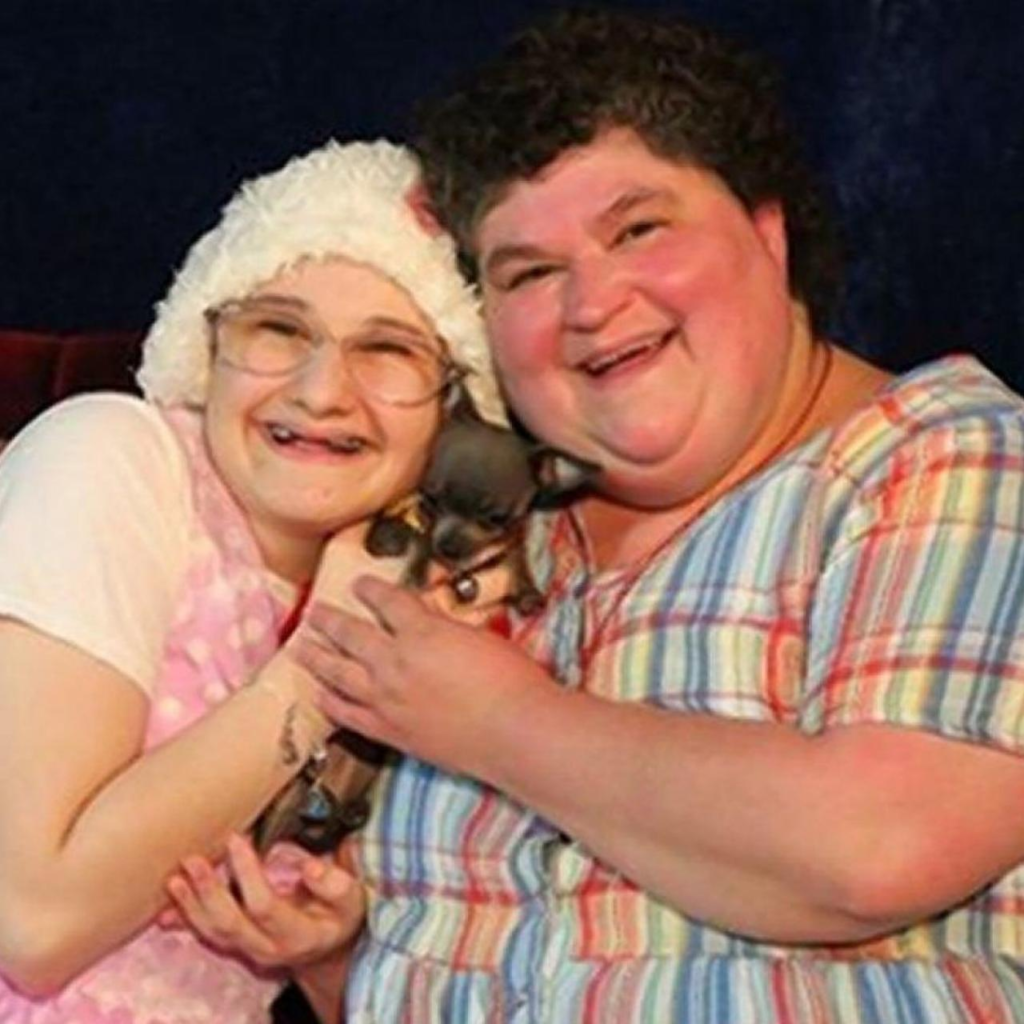Introduction to DD Blanchard Photos
DD Blanchard Photos, born Clauddine Pitre, lived much of her life in obscurity, but her name would later become synonymous with one of the most shocking and unsettling true crime cases in recent history. Her story revolves around the complex and troubled relationship with her daughter, Gypsy Rose Blanchard, and the darker secrets she harbored behind the facade of being a loving and devoted mother. Dee Dee’s photos, many of which depict her alongside her daughter, paint a picture of a woman who appeared caring and maternal. But beneath these images lay a twisted reality, one that would eventually lead to her untimely and brutal death.
Early Life of DD Blanchard Photos
DD Blanchard Photos was born in 1967 in Chackbay, Louisiana. Her early years were marked by a difficult family life, which would later influence her parenting style. She came from a family with its share of turmoil, and there are reports that even in her youth, Dee Dee exhibited troubling behavior. There were rumors within her family that she had a manipulative streak, and some even claimed she engaged in minor acts of criminality.
As a young adult, DD Blanchard Photos moved away from her family, seemingly eager to start fresh. She eventually gave birth to her only child, Gypsy Rose, in 1991. What should have been a joyful time in her life quickly took a darker turn, as Dee Dee would begin a pattern of control and deception that would span nearly two decades.

The Striking Contrast Between Photos and Reality
In the years that followed Gypsy’s birth, Dee Dee began to craft an elaborate and disturbing narrative about her daughter’s health. She claimed that Gypsy suffered from numerous medical conditions, including leukemia, muscular dystrophy, and brain damage. Dee Dee convinced doctors, friends, and even her own family that Gypsy was gravely ill, though in reality, Gypsy was healthy.
The photos from this time in Dee Dee and Gypsy’s life are often heartbreaking to look at, particularly because of the innocence on Gypsy’s face. In many images, Gypsy is seen in a wheelchair, wearing oxygen masks, and often in hospital settings. Dee Dee, standing by her side, appears as the loving mother who is dedicated to her sick child. These images would go on to become some of the most iconic representations of what seemed like a tragic story of a mother and daughter battling impossibles. However, it was all a facade. The reality was far more sinister.
The Practice of Munchausen by Proxy
Dee Dee’s actions have been widely analyzed through the lens of Munchausen syndrome by proxy. In this psychological disorder, a caregiver fabricates or induces illness in another person to gain attention and sympathy. In Dee Dee’s case, she presented herself as a selfless mother caring for her sick child. This deception allowed her to receive financial support, charity donations, and housing from various organizations.
The photos of Dee Dee and Gypsy from this period are particularly telling because they contrast sharply with the reality that Gypsy wasn’t sick. Dee Dee had effectively trapped Gypsy in a life of falsehoods, forcing her to endure unnecessary medical treatments and surgeries. For years, Dee Dee was able to manipulate not just those around her but Gypsy herself, convincing her that she was gravely ill and dependent on her mother for survival.
The images of Dee Dee proudly pushing Gypsy in a wheelchair or holding her hand in a hospital room became symbolic of a seemingly devoted mother. Yet, for those who later learned the full story, these photos take on a different meaning—they become haunting reminders of the manipulation and control Dee Dee exerted over Gypsy’s life.
The Public Perception and Dee Dee’s Carefully Curated Image
In her local community and beyond, Dee Dee was seen as a hero. Media coverage of the Blanchards often portrayed Dee Dee as an inspiring figure, a mother who had sacrificed everything to care for her terminally ill daughter. They lived in a home built for them by Habitat for Humanity, and Dee Dee regularly received donations from various charities, including the Make-A-Wish Foundation.
The photos from this period in Dee Dee’s life show a woman who appeared to be holding her family together against all odds. Dee Dee frequently posted pictures of Gypsy on social media, updating followers on her daughter’s “progress” and expressing gratitude for the continued support they received. These images created a perception of Dee Dee as a tireless caregiver who only wanted the best for her child.

However, what the public couldn’t see was the immense pressure and abuse that Gypsy endured behind closed doors. While Dee Dee smiled for the cameras, she continued to manipulate and control her daughter, isolating her from the outside world and preventing her from living a normal life. The photos of Dee Dee during this time reflect the duality of her nature—outwardly loving and compassionate but inwardly calculating and abusive.
The Truth Unveiled
The carefully crafted image DD Blanchard Photos presented to the world would eventually begin to crumble. Gypsy, who had been raised to believe she was sick and reliant on her mother, started to realize the truth about her health. By the time she was in her late teens, Gypsy had developed an awareness of the manipulation she had been subjected to but felt powerless to escape.
The story took a violent turn in June 2015 when Dee Dee was found dead in her home, having been stabbed to death. Gypsy was missing, and authorities initially feared that she had been kidnapped. However, it was soon revealed that Gypsy, with the help of her online boyfriend, Nicholas Godejohn, had orchestrated her mother’s murder.
The revelation that Dee Dee had been lying about Gypsy’s health for years shocked the public. The woman who had once been seen as a devoted mother was now recognized as a perpetrator of abuse. The photos of Dee Dee and Gypsy, once seen as heartwarming depictions of a strong mother-daughter bond, now carried a much darker connotation.
Gypsy’s Perspective: The Photos Through Her Eyes
For Gypsy Rose Blanchard, the photos taken during her childhood and adolescence serve as painful reminders of the life she was forced to live. Many of the images show her in a wheelchair, smiling as Dee Dee stands behind her, but Gypsy later revealed that she was often coerced into putting on a brave face for the cameras. These photos, which were meant to inspire sympathy and support, now serve as evidence of the false narrative Dee Dee had constructed.
From Gypsy’s perspective, the photos represent the years of abuse she suffered at the hands of her mother. In interviews conducted after Dee Dee’s death, Gypsy spoke about how she had been kept in a state of fear and dependence, convinced that she was sick and helpless. The photos, which were once used to solicit donations and support, are now part of the tragic story of how Gypsy was manipulated and exploited.
The Aftermath and the Legacy of the DD Blanchard Photos
The case of DD Blanchard Photos and Gypsy Blanchard has been the subject of numerous documentaries, news reports, and even a Hulu miniseries, “The Act.” In each retelling of the story, the photos of Dee Dee and Gypsy are prominently featured, serving as visual documentation of the facade Dee Dee created.
These images have taken on a new significance in the wake of the truth being revealed. For many, they are a reminder of how easily appearances can be deceiving and how dangerous unchecked control and manipulation can be. While Dee Dee may have intended for these photos to paint her as a loving mother, they now tell a different story—one of control, abuse, and the desperate need for freedom.
The Psychological Impact of DD Blanchard Photos’s Deception
The psychological implications of the DD Blanchard Photos case are profound. Her manipulation of Gypsy Rose through the use of her illness was more than just physical abuse; it was emotional and mental torment that lasted nearly two decades. The photos Dee Dee took and shared were not just for public consumption—they were a tool of control and reinforcement of the false narrative she had created. These images became part of the lie, serving as a visual cue that continually reminded Gypsy of the life her mother had constructed for her, one that was built on deception, isolation, and helplessness.
For Gypsy, these photos likely represented moments where she had to pretend, putting on a brave face for the world. Many of the images show her smiling, playing the role Dee Dee expected her to play. However, that smile hid a deep inner turmoil and confusion, as Gypsy later revealed in interviews. The psychological toll of living a fabricated life was immense, and it manifested in her desperation to escape the clutches of her mother, culminating in the tragic events of 2015.

Dee Dee’s ability to control the narrative through these photos was also an example of how public perception can be easily manipulated. While outsiders viewed her as a selfless mother, those images painted a far different picture once the truth was revealed. The case serves as a stark reminder of the power of media, imagery, and the stories we are told, and it challenges us to question what may be lurking beneath the surface of even the most heartwarming tales.
The Role of Media in Amplifying the Deception
DD Blanchard Photos was remarkably adept at using the media to amplify her deception. Local news outlets frequently covered the “heartbreaking” story of Gypsy’s supposed illnesses, and the numerous photos Dee Dee released to the public helped perpetuate this lie. In these media stories, Dee Dee’s tireless caregiving and the severity of Gypsy’s condition were emphasized, casting her as a hero and Gypsy as a victim of unfortunate circumstances.
These media stories often included the photos Dee Dee carefully curated, showcasing a young girl in a wheelchair with a devoted mother by her side. The images were powerful tools of persuasion, and they convinced many people—friends, family members, and strangers alike—that the Blanchards were in genuine need of help and support. As a result, various charitable organizations, such as Habitat for Humanity and Make-A-Wish, provided the family with financial aid, gifts, and even a house.
Conclusion: The Lasting Impact of DD Blanchard Photos
The story of DD Blanchard Photos and her daughter Gypsy is one of the most disturbing and tragic cases in recent history. Dee Dee’s photos, once used to garner sympathy and support, now serve as haunting reminders of the lies she told and the abuse she inflicted. For Gypsy, these images are a painful reminder of the life she was forced to live under her mother’s control.
While Dee Dee may no longer be alive, her legacy continues to be felt, and the photos that once symbolized a loving mother-daughter relationship now represent something far more complex and sinister. The case of DD Blanchard Photos serves as a cautionary tale about the dangers of manipulation and the lengths some will go to maintain control over others. It also highlights the importance of understanding the full story behind what may seem like an idyllic life captured in photos.





